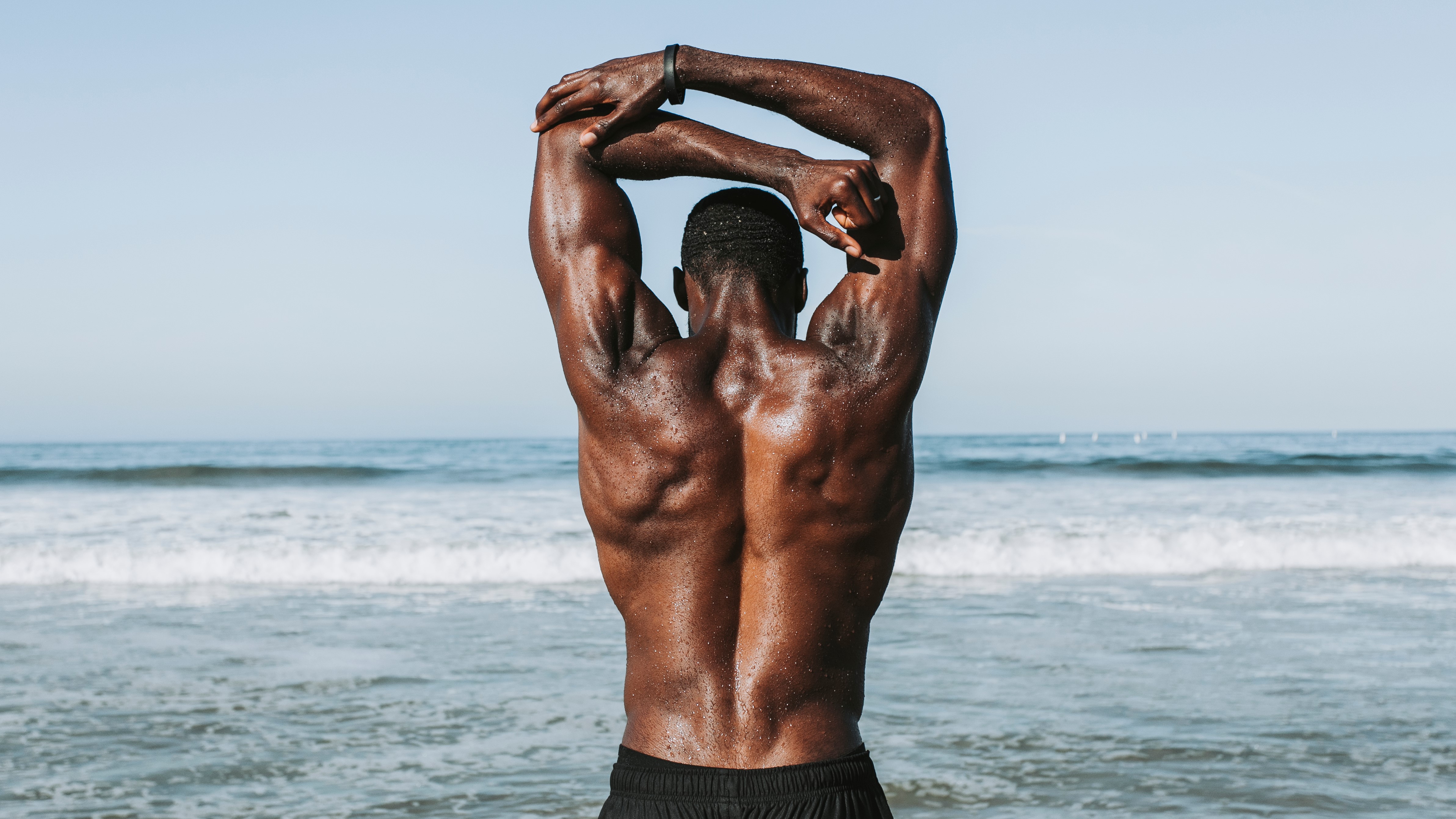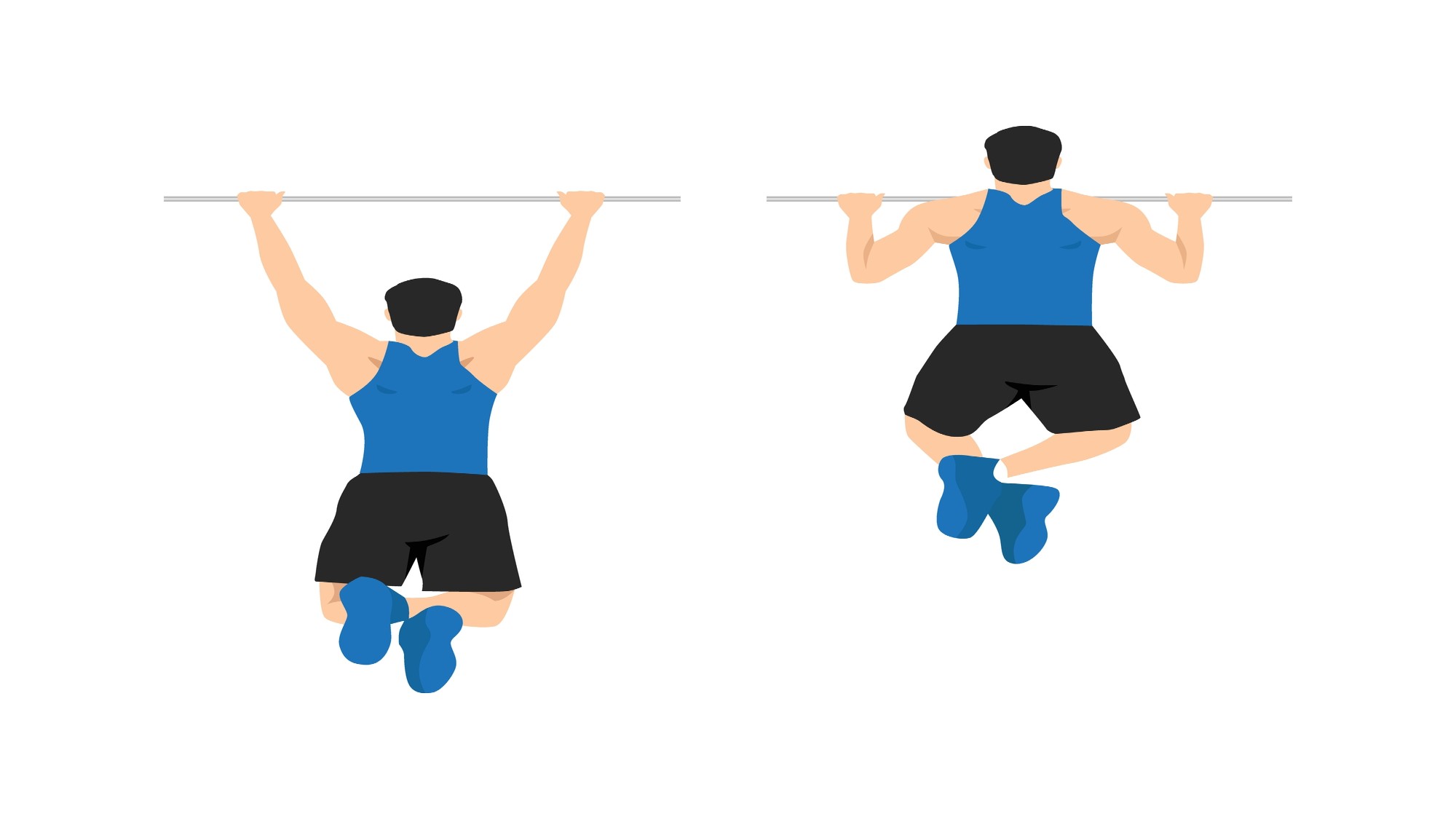
Sculpted back muscles have become a coveted goal for many gym-goers, but although lifting some weights will help you build muscle and strength in your back, it's just not that easy.
The tapered muscular look is widely sought after, and it’s not just an aesthetic. Your back muscles are responsible for maintaining good posture, protecting you and encouraging proper exercise form. Take the rhomboids, for example — these humble muscles help pull the shoulder blades together to avoid rounded shoulders.
And Gym bunnies — You’ll also need a strong set of back muscles to lift heavier, especially if you’re working on your deadlifts.

So there are plenty of reasons to pay them attention, whoever you are. With that in mind, these three compound exercises are my favorite for building strength and muscle. Oh, and cutting that V-shaped back.
You’ll just need a barbell, your body weight or a set of the best adjustable dumbbells to do these moves properly. You could also adapt and use a heavy rucksack or filled water bottles if you're exercising on vacation or a work trip.
What are 3 best compound back exercises for building strength and muscle?
Dumbbell shrugs

The key to the V? Let’s start at the top with thick trapezius and deltoids. The delts (shoulders) and traps (upper back muscles that span from shoulder to shoulder) are both targets of the shrug exercise. The move also hits the aforementioned rhomboids and tests forearm and grip strength. If you plan to hold a barbell or set of dumbbells for a period, this move could help, and strong traps translate to other exercises like deadlifts, rows and pull-ups.
Below, we use dumbbells as an example.
Get instant access to breaking news, the hottest reviews, great deals and helpful tips.
How:
- Start holding a dumbbell in each hand and place your feet hip-width apart
- Pull your shoulders back and down and engage your core
- Drive your shoulders toward the ceiling without rounding your shoulders forward
- Squeeze your traps together for a couple of seconds at the top
- Slowly lower your weights back to your starting position.
Keep a neutral neck position, allowing your traps to drive the move while keeping your chest open and shoulders pulled back, squeezing your shoulder blades together.
Here’s what happened when our writer did dumbbell shrugs every day for a week.
Pull-ups

Working our way down the back, next we have the lats — or lattisimus dorsi muscles. These large wing-like muscles create definition from your shoulders down to your waist and add width, helping to develop the well-known V-taper.
Your lats activate during pulling and adducting movements, like rowing or lowering your arms to your sides. Pull-ups emphasize your lower traps — a crucial muscle for supporting your scapula.
How:
- Stand under a bar and grip it with both hands
- Wrap your thumbs around the bar
- Contract your whole body. Draw your shoulders back and down
- Hang from the bar, then engage your lats, slightly shrug your shoulders and pull your chin over the bar without swinging your body
- Slowly lower back down with control.
Can't decide between pull-ups vs chin-ups? It's all in the emphasis. The exercises utilize the same movement pattern with different hand positions, which means you can develop different muscle groups.
Hyperextensions

The erector spinae muscles hug the spine and support heavy lifting and posture, so strengthening them is crucial. These muscles are technically core muscles, as they help stabilize your torso. The back extension targets the lower, mid and upper back, the posterior chain muscles like your glutes and hamstrings, and the hip flexors.
How:
- Start with your feet rested on the footplates of your bench and thighs rested with your hip joints just in front of the bench
- Engage your core, gently squeeze your glutes and back
- Keep your spine and neck straight, and pull your shoulders back and down
- Hinge forward at the hips and lower your chest toward the floor and your thighs
- Pause, then drive back to your starting position, creating a straight line from head to toe. Hold a weight in your hand for extra resistance.
As a personal trainer, this is one of my favorite exercises to strengthen muscles using minimal equipment.
Bottom line
When I work with clients, I like to use a mix of bodyweight exercises and weights. One of the best ways to build foundational strength includes calisthenics — workouts relying on your body weight. That’s why pull-ups feature here and help develop upper-body strength fast.
These back exercises aren’t one-offs, so add them to your current strength program for best results. Strengthening and growing your back muscles is a process, after all. You’ll need to overload the muscles using a method called progressive overload — providing enough stimulus to encourage growth while training consistently.
And although there are many back muscles, big and small, you can train your entire back with just three compound exercises. Try 3-4 sets of 8-12 reps and progressively add weight, reps or sets as you get stronger.
More from Tom's Guide
- I'm a personal trainer and this is the most underrated gym equipment for building strength
- Forget planks — this 15-minute crunches workout sculpts your abs
- I'm a personal trainer, here are 3 best compound exercises for building shoulder strength and muscle.

Sam Hopes is a level 3 qualified trainer, a level 2 Reiki practitioner and fitness editor at Tom's Guide. She is also currently undertaking her Yoga For Athletes training course.
Sam has written for various fitness brands and websites over the years and has experience across brands at Future, such as Live Science, Fit&Well, Coach, and T3.
Having coached at fitness studios like F45 and Virgin Active and personal trained, Sam now primarily teaches outdoor bootcamps, bodyweight, calisthenics and kettlebells.
She also coaches mobility and flexibility classes several times a week and believes that true strength comes from a holistic approach to training your body.
Sam has completed two mixed doubles Hyrox competitions in London and the Netherlands and finished her first doubles attempt in 1:11.
